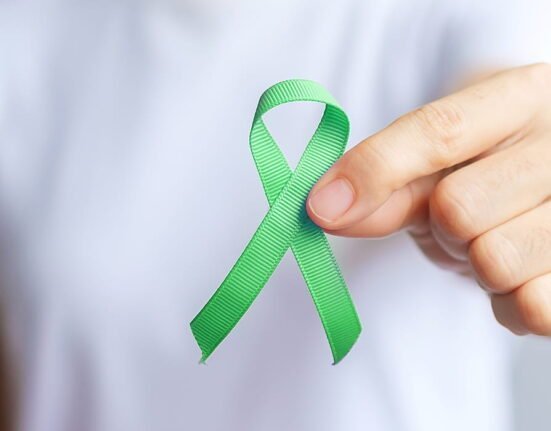Have you wondered what mushrooms do to us, not the edible mushroom we use in the kitchen, but the one that is classified under psychedelics? Are they good or bad? Do they truly benefit those who use them? Let’s see what is the advantage of using psychedelics in the therapeutic setting.
Psychedelics
The term psychedelics was proposed Humphry Osmond in 1956. Psychedelics are a cluster of psychoactive drugs that alters the consciousness, energy level, thought, mood and sensory perception of an individual who consumes it. These are also called as hallucinogens. It is called so because it can cause hallucinations after consumption.
History of Usage
Hallucinogens are commonly used in religious rituals. It is named as entheogens while consumed for religious purposes. Later, in 1960s it slowly came to use in therapeutic settings. Still, it is not fully recognized as a therapeutic treatment. But researchers are working in this area to maximize the benefits of its therapeutic use. In the 1970s, Frida G. Surawicz and Richard Benta discussed two case studies which explained that usage of hallucinogens caused Lycanthropy (delusion of changing into wolf).
Leo Hollister, an American Professor of Psychiatry has given five criteria to classify a drug as hallucinogen.
- primarily change in perception, thought and mood.
- minimal intellectual or memory impairment.
- stupor, narcosis and external stimulation are not an expected or normal effect.
- minimal effect on autonomic nervous system.
- complete absence of craving that cause addiction.
Types of Psychedelic drugs
Psychedelics can de either natural or synthetic.
- Lysergic Acid Diethylamide (LSD)
- Dimethyltryptamine (DMT)
- Mescaline
- Ololiuqui
- Psilocybin
- Ecstasy
Effects of Psychedelic drugs
- Mixed sensory perceptions
- Increased awareness
- Altered time perception
- Increased energy
- Difficulty in communication
- Nausea
Addiction and tolerance
Psychedelics are not very addictive but said to develop tolerance for psychedelics and also may cause cross tolerance.
Microdosing
Microdosing refers to the regular intake of these drugs in very small quantity, typically one tenth or one twentieth of a typical non-clinical dose. However, users say it has reduced negative impact on the depression, stress and improved productivity, ease pain.
How does it work in brain?
Altered consciousness
Hallucinogens interact with serotonin 2A (5-HT2A) receptors in the brain. These receptors are predominantly seen in Excitatory pyramidal neurons in the 5th layer of the cortex. When hallucinogens bind to these receptors they increase the neuronal excitability, leading to alterations in perceptions and cognition.
Robin Carhart-Harris, a prominent researcher in this field says that psychedelics affect the default hierarchical processing and bring up more egalitarian networking system where the higher order brain regions are not dominant. It leads to increased communication across the other regions of brain and facilitates novel brain connection and insights. Such changes lead to the profound alterations in the consciousness.
Ego dissolution
Hallucinogen is known for the disintegration of self it creates in its users. It happens because the psychedelics affect the Default Mode Network (DNM) which is associated with self referential mentalization. By modulating the activity of this DNM hallucinogen often induce experiences that is so called mystical or ego-dissolving.
Therapeutic use – A recent study on psychedelics says that it may enhance intimacy, attraction and sexual expression
Research on psychedelics was done by Daniel Kruger from University of Buffalo and published in Journal of sex research on March 28, 2025. The study was done among 581 psychedelic users which revealed that psychedelic has positive impact on intimacy, sexuality, romantic relationship and gender expression. The study was conducted in survey method which comprised questions related to their gender identity, romantic or sexual relationship and sexuality. Participants reported that the most commonly used psychedelics are psilocybin mushrooms, LSD, ecstasy and ketamine.
Psychedelic therapy is being practised in the Colorado and Oregan for its positive impact on higher level of self-insight and increased connection with people. The researcher identified two key findings:
- 70.2% people who used psychedelics reported increased sexuality or relationship quality.
- 65.4% of participants stated temporary effects.
- Whereas 10% of psychedelic users said experienced changes in gender identity.
- And few participants reported the experience of gender fluidity.
- 25% of women and 1 in 8 men shared that they experienced same-sex attraction.
The researcher stated that psychedelic will be the psychiatric medication for next generation. And proper guidelines should be provided to the utilizer to maximize the benefits and minimize the harm.
Conclusion
Psychedelics are known for its disadvantages or distress it creates to the consumer as it gives rise to hallucinations. Though it is used in religious practice in the early 1960’s and its usage were significantly decreased overtime. But now researchers showing interest to know its effect in mental health related treatment. Yet, new researchers are needed to analyse its pros and cons.
Read More: New Research Tests Psychedelics as a Treatment for Anxiety and Depression
References +
- MSc, E. H. B., MA PhD. (2023, June 29). What are psychedelic drugs? Verywell Mind. https://www.verywellmind.com/types-of-psychedelic-drug-22073
- Wikipedia contributors. (2025, March 30). Hallucinogen. Wikipedia. https://en.wikipedia.org/wiki/Hallucinogen
- Neuroscience News. (2025, March 31). Psychedelics may enhance intimacy, attraction, and sexual expression. https://neurosciencenews.com/psychedelics-intimacy psychopharmacology-28530/
- Psychedelic and Dissociative drugs | National Institute on Drug Abuse. (2024, April 9). National Institute on Drug Abuse. https://nida.nih.gov/research-topics/psychedelic dissociative-drugs#work-in-the-brain
- How do hallucinogens work on the brain? (2014). In Frontiers in Human Neuroscience (Vol. 8, p. 20). https://www.researchgate.net/profile/Mendel Kaelen/publication/266088575_How_do_hallucinogens_work_on_the_brain/links/54254a2b 0cf238c6ea73fc31/How-do-hallucinogens-work-on-the-brain.pdf
- Beans, C. (2024). If psychedelics heal, how do they do it? Proceedings of the National Academy of Sciences, 121(2). https://doi.org/10.1073/pnas.2321906121













Leave feedback about this